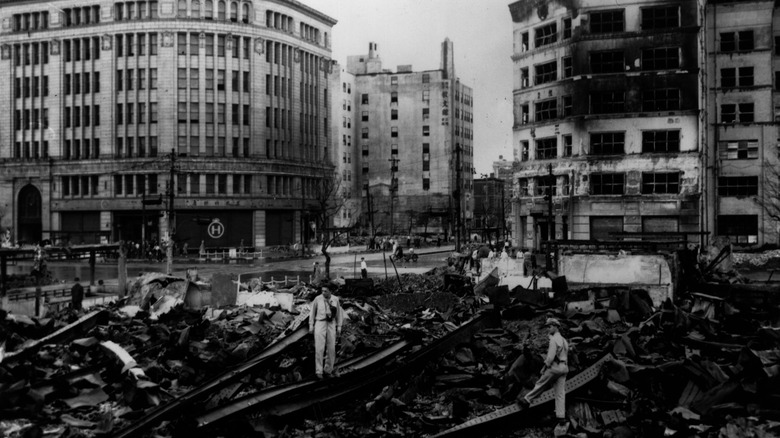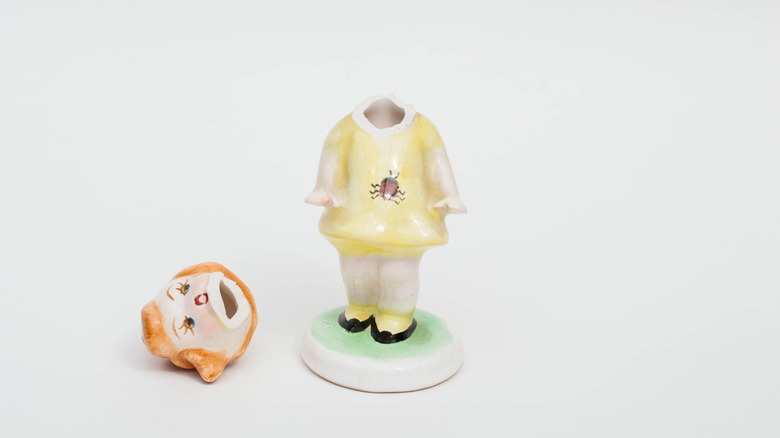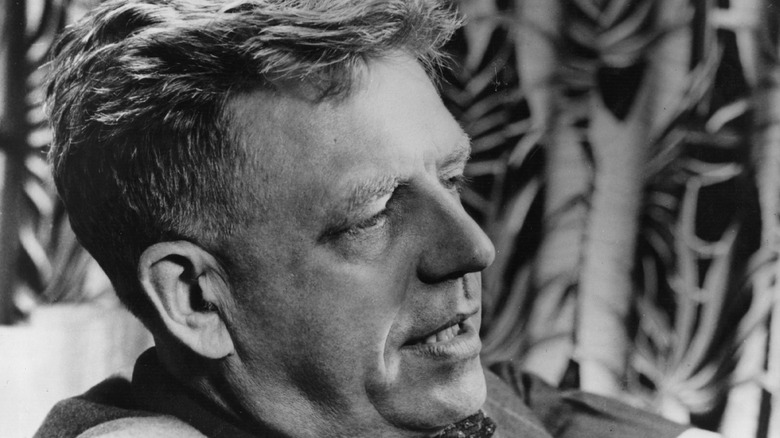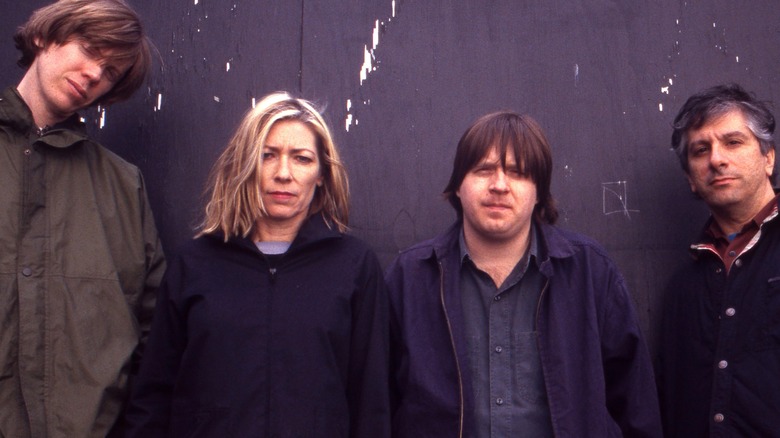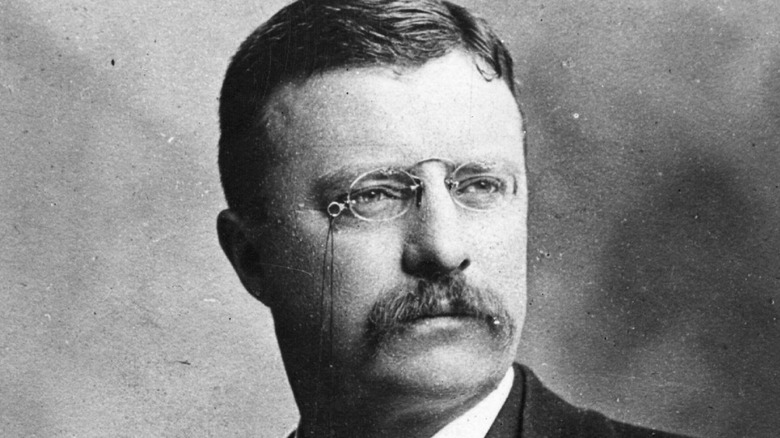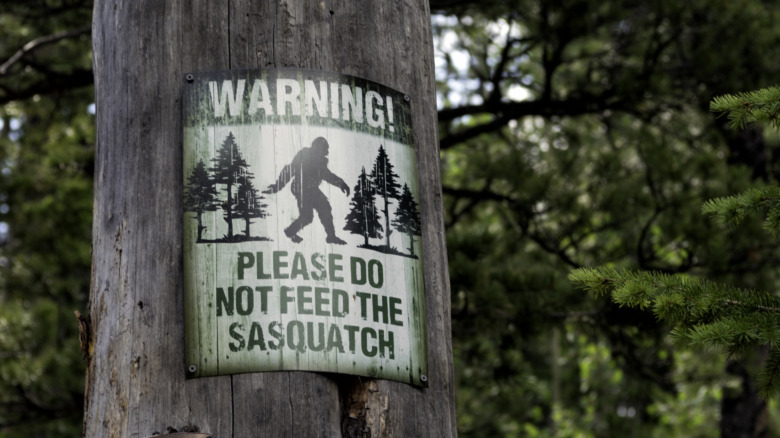
The Dark Truth About The Tokyo Bombing During WWII
The atomic bombings of World War II were without doubt some of the most destructive single acts of war humanity has ever seen. However, their impact was of dubious effect on Japanese civilians and government officials who were not immediately involved. That is because for months Japan was already faced with a far deadlier American threat (via All That’s Interesting). Ever since their loss at Midway, Japan had been on the defensive against the Americans, and in 1945 lost enough territory that all manner of American aircraft were in range of its cities (via History).
Despite Japanese efforts to create new fighter aircraft that could intercept American bombers (even turning to German jet- and rocket-powered designs, which were born out of the same predicament), nothing stopped the hundreds of B-29s from striking wherever they wanted (via Smithsonian National Air and Space Museum). The Americans by this time were not just motivated by Pearl Harbor, but were also fueled by revelations of the numerous atrocities committed by the Japanese military, with the emphasis being on those atrocities committed against U.S. service members, like the Bataan Death March. For them, any and all measures to force a Japanese surrender were considered valid. Combined with the utter refusal of the Japanese high command to consider such “dishonor,” the situation resulted in incredible suffering for the populace.
More people were killed in Tokyo than Hiroshima and Nagasaki
With 1945 came the beginning of the end for many of Japan’s major cities. Tokyo became the focal point of America’s offensive, for both its importance as Japan’s capital, and its construction. While much of Japan was modern and industrialized, most civilian homes made heavy use of wood and paper. This left them exceptionally vulnerable to fire, which is why incendiary bombs were the weapon of choice for the Americans (via CNN). Napalm burned across the flammable Japanese neighborhoods as civilians desperately tried to flee the inferno.
Operation Meetinghouse, the March 10, 1945 firebombing of Tokyo, killed over 100,000 people and left millions wounded and homeless, most of them civilians. The destruction was so great that even in 2013 the Japanese government denounced the attacks as having violated international law (via Japan Times). However, while memory of the campaign has not disappeared, it is also not as well known as the bombings of Hiroshima and Nagasaki as far as the general public is concerned. In Japan there are virtually no memorials or days of remembrance for this event, and it has largely fallen to the initiative of private individuals to raise awareness (via The New York Times).

Why The Bible's Abraham Was Willing To Sacrifice His Own Son
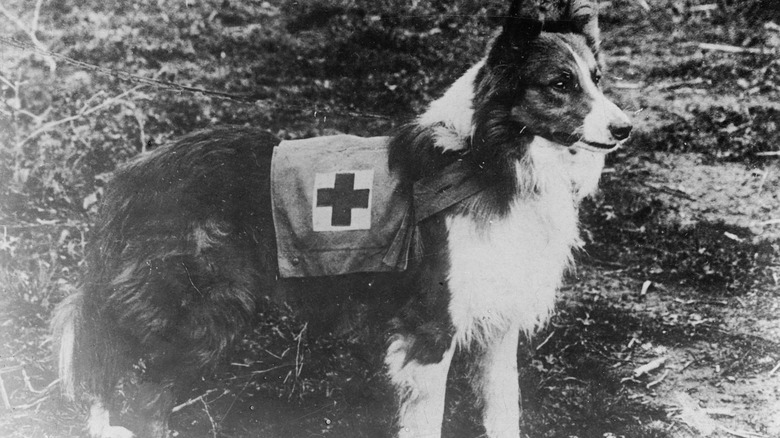
How Dogs Actually Played A Role In World War I

The Untold Truth Of 20,000 Leagues Under The Sea
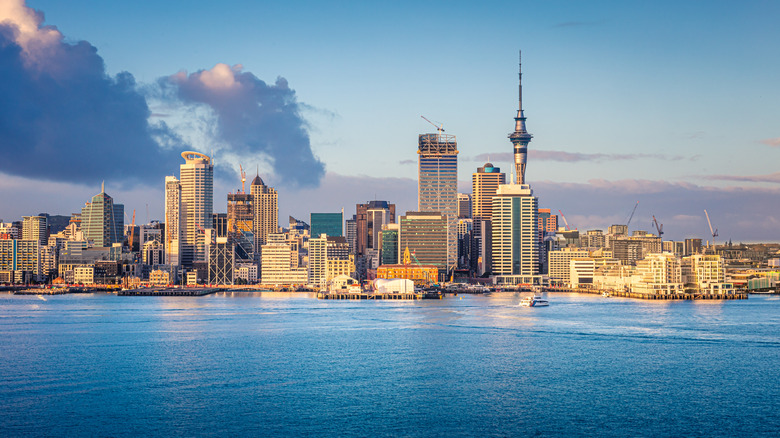
The Surprising Time The US Tried To Invade New Zealand

What Life Would Be Like If Dinosaurs Never Went Extinct

How Google Earth Helped Solve The Case Of A Brutal Execution
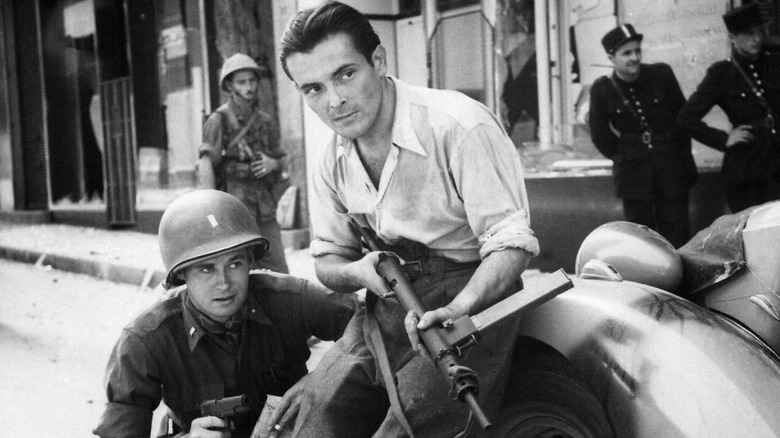
The Untold Truth Of The French Resistance

Evita's Body Was Stolen. Here's What Happened

The Battle Of Britain Featured One Of The Earliest Uses Of This

The Crazy True Story Of The Family Behind The Opioid Crisis
